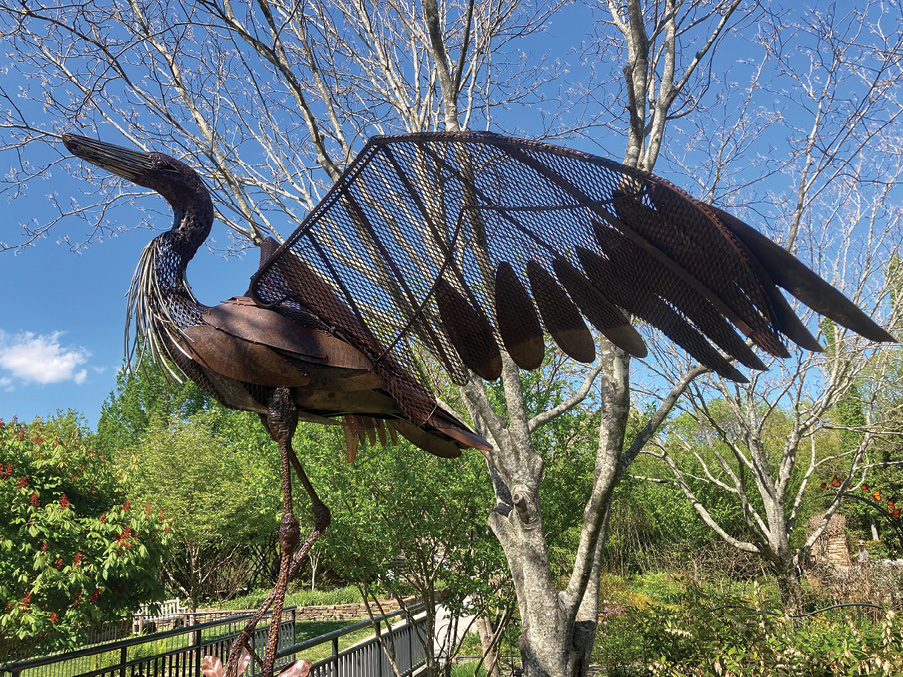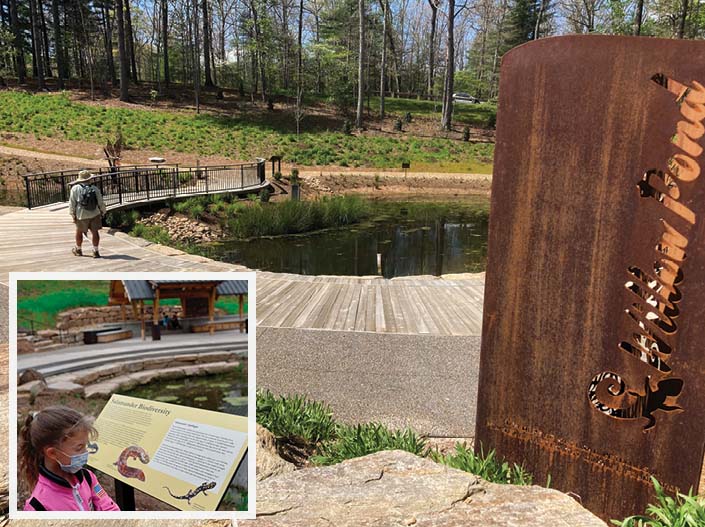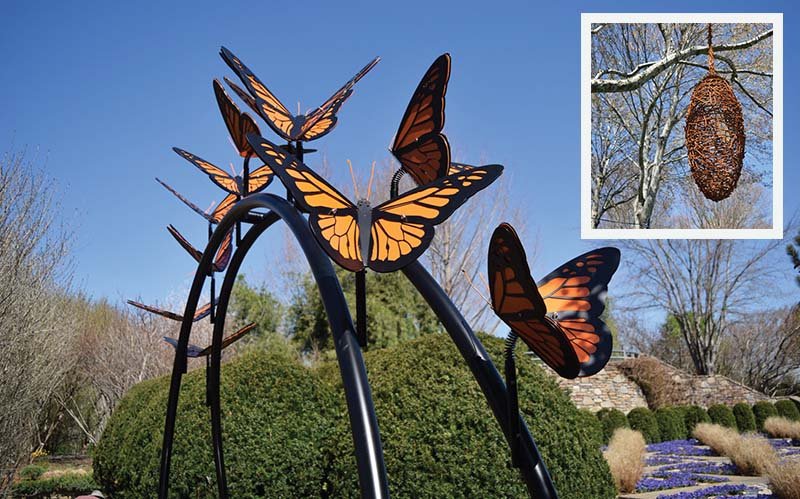Fantastic Forms
Fantastic Forms: A sculpture showcase comes alive at the North Carolina Arboretum
The Great Monarch Migration, one of 17 independently designed sculptures shared in the Wild Art exhibit.
The North Carolina Arboretum in Asheville has long incorporated inanimate art among its living displays of flora, but a new outdoor sculptural showcase, Wild Art, introduces a panoply of temporary new works, ranging from realism to abstraction, that interact with the natural world and the institution’s cultivated landscapes.
Seventeen sculptors, selected from local and national applicants, created works that hang from trees, seemingly pop out from behind shrubs, flutter above archways that span the trails, and rise from lagoons in this engaging exhibition. To create the pieces, the artists were asked to be “inspired by the animal kingdom—locally, regionally, and worldwide” and to be inclusive and immersive to appeal to a diverse, multi-generational audience. Because of COVID-19, artists refrained from submitting art with any tactile components, while kinetic art was encouraged.

The Great Monarch Migration, by Jim Gallucci, delights in its movement. Mounted on springs over a sturdy arch, grand monarchs “flutter,” bobbing in the wind and tickling the sky. His Flight of Blackbirds, likewise, rotates metal wings in a strong gust. Just as delightful, but less literal, is Sanctuary by John M. Almaguer (glass) and Julia C. Burr (metal). The oblong, weathered steel-woven vessel encloses a clear glass form that catches the light as the entire structure hangs suspended from a tree branch. The blue sky, emerald-green leaves, blossoms and grasses beyond, visible through the piece itself, interlace and become part of the art. Hope, by Jim Weitzel, allows visitors to interact directly, posing with patined bronze wings, as if emanating from their shoulders. Wood, glass mosaic, steel, wire mesh, marble—many materials bring the artists’ visions to completion—be they interpretations of animals, insects, plants, or something less definable.

Lots to Pond-er
At the end of a forested path emerges the Arboretum’s newest outdoor setting, Willow Pond. A din of nature’s voices—frogs, birds, buzzing insects—rises and falls with the sun in this wetland environment that was once used as a sediment collection basin during part of the Arboretum’s construction. The three-year, $2 million project uses a three-pond natural filtration system, even incorporating elements of stormwater management into the nearby parking lot to help reduce runoff and soil erosion.
The pond is home to a diversity of wildlife and provides teaching opportunities about wetland ecosystems. The expanse includes a boardwalk between ponds, a shelter for lectures and interpretive talks, and a charming “frog kiosk” that plays different amphibian vocalizations. Educational signage explains how the water basins collect and filter runoff and create a setting conducive to amphibian and reptile species like the mole salamander, Eastern newt, several varieties of frogs and toads, and the common snapping turtle. As a relatively new feature, Willow Pond is still filling out and developing, providing an outdoor laboratory as suited for learning as for a delightful stroll.
Wild Art
Through September 26
North Carolina Arboretum
100 Frederick Law Olmsted Way, Asheville
(828) 665-2492 ncarboretum.org
